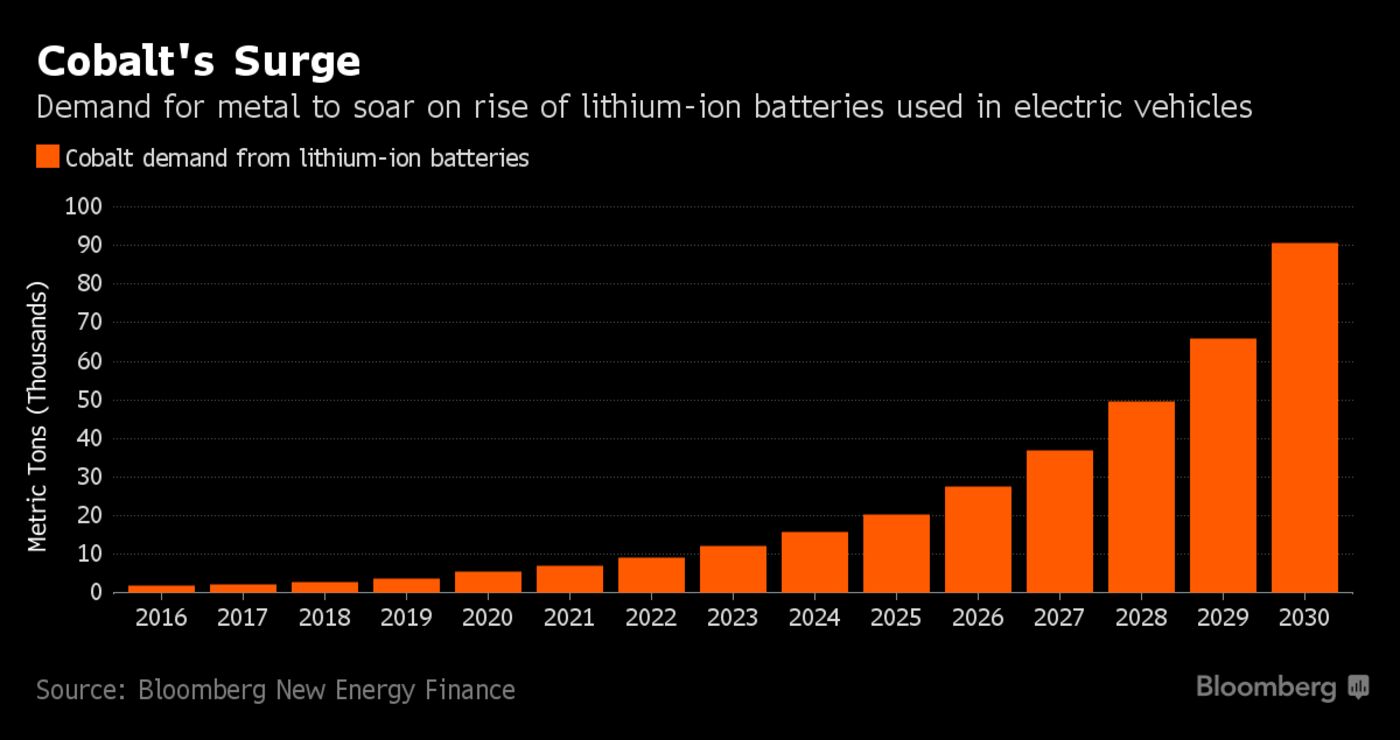Categories:
Energy
/
General Market Commentary
Topics:
General Energy
/
General Market Commentary
Race Is on to Mine Metal Powering Electric Vehicles
-
Projects from Australia to U.S. are aiming to tap battery boom
-
Price may double in 2017 on supply deficit, CRU Group says
The race is on to supply more of the cobalt needed for batteries in the fast-growing market for electric vehicles -- and that means fresh competition for the big players Glencore Plc and the Democratic Republic of Congo.
A pipeline of projects is looming in places including Australia, the U.S. and Canada after cobalt prices more than doubled in the past year. Glencore produces almost a third of the world’s supply, mainly from the Congo, which is by far the biggest source, accounting for as much as 65 percent.
Among those backing new global developments are billionaire Anil Agarwal and mining tycoon Robert Friedland. They’re aiming to capitalize as a battery boom sends demand for cobalt soaring more than 30-fold by 2030, according to Bloomberg New Energy Finance.
“There’s going to have to be a response that goes beyond Congo,” said Sam Riggall, chief executive officer of Friedland-backed Clean TeQ Holdings Ltd., which is developing a $680 million cobalt, nickel and scandium project about 350 kilometers (218 miles) west of Sydney. Congo’s tight grip on the market is a concern for battery producers to auto makers, he said. “They are desperately looking for sources of supply outside of Africa.”

The arrival of an era of battery-powered vehicles has already kick-started a period of unprecedented growth for the metal, Franck Schulders, Glencore’s head of marketing, cobalt, said in an interview. Volkswagen AG and Ford Motor Co. are among automakers investing in electric vehicles and the whole market could be worth $244 billion by 2025, Goldman Sachs Group Inc. said in a late 2015 report.
Rising cobalt demand and flat supply in the 100,000 metric-tons-a-year market opened a 1,500 ton deficit in 2016 that could triple this year, according to CRU Group. There’s more than 370 undeveloped discoveries and at least a dozen viable projects outside Congo that could come online by 2023, CRU senior consultant Edward Spencer said in an email.
“There’s no way that current supply is going to keep up,” said Matthew Painter, managing director of Ardea Resources Ltd., which is aiming to develop a former Vale SA deposit in Western Australia that the company estimates holds the developed world’s largest cobalt resource. “Some of the forecasts for cobalt supply are pretty dire.”

Cobalt on the London Metal Exchange traded at about $32,000 a ton at the end of 2016, up 36 percent from the previous year, and has rallied about 65 percent to more than $56,000 a ton this year. That’s equivalent to more than $25.40 a pound. They’re likely to double in 2017 and may remain above $20 a pound through the end of the decade, CRU’s Spencer said.
A typical electric car battery contains 15 kilograms of cobalt, while a laptop needs around 33 grams and a smartphone requires 6 grams, according to Sydney-based project developer Cobalt Blue Holdings Ltd.
Click here to continue reading...